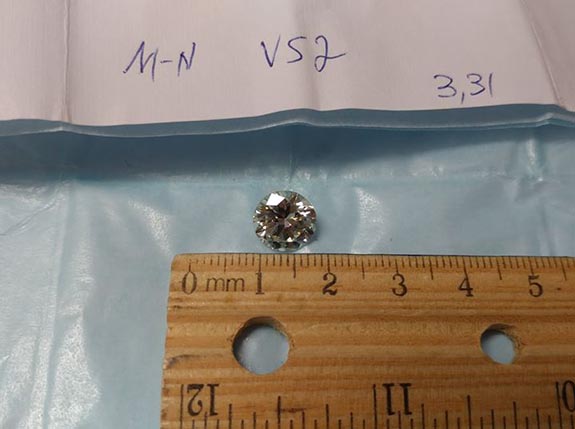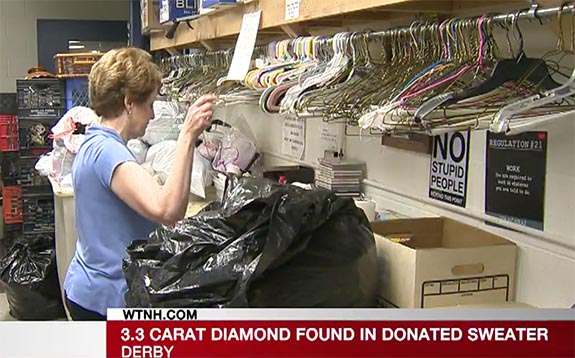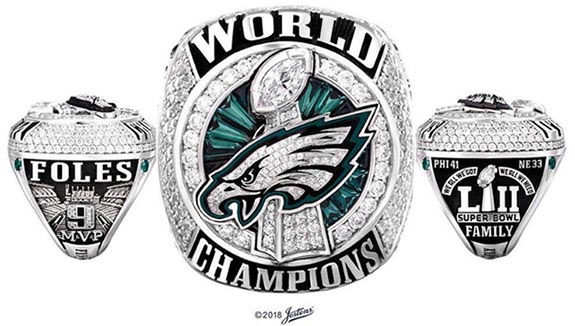Workers at the St. Vincent de Paul Thrift Shop in Derby, Conn., went above and beyond the call of duty to reunite a woman with the 3.3-carat loose diamond she forgot she had pinned to the inside of a donated sweater.
The store's Facebook page explained how one of the thrift shop's trusted sorters was carefully folding the grey sweater when she felt an unusual bump in the fabric. She turned the garment inside out and noticed a little black bag safety-pinned inside. She opened the bag to find another bag, and inside of that, a piece of thick blue parcel paper that is commonly used by diamond traders.
Tucked inside the folded paper was a round 3.3-carat diamond. Hand-written notes on the paper revealed the exact carat weight (3.31), clarity (VS2) and color grade (M-N). Diamonds with these characteristics typically sell for $30,000 or more.
"We were in such disbelief that this could have occurred on our sorting table," shop director Remy Kocurek told ABC affiliate WTNH.
The next task was to find the woman who had donated the sweater. They knew what she looked like, but they didn't have her name.
The thrift shop workers reviewed their security videos and were able to glean the license plate number of the woman's car. The workers sought the help of the local police department, which was able to ID the car's owner and request that she return to the store.
She complied with the police department's request, but was curious to know why she was summoned.
The rest of the story is recounted on the store's Facebook page...
"We asked her if she recalled donating the grey sweater and she said that she did. Very quickly, the color drained from her face as she realized what she had done. Collapsing into a chair, she shook her head and almost started crying. She hugged us and expressed her gratitude over and over at the return of a very valuable family heirloom. An exciting day at the best little thrift shop around!"
"It just felt wonderful to do that for her," Kocurek told WTNH.
It's still not clear why the woman had pinned an unmounted $30,000 diamond inside an old sweater. A safety deposit box may have been a better bet.
Credits: Screen captures via wtnh.com.





